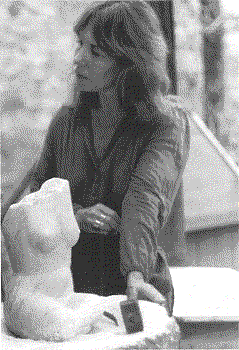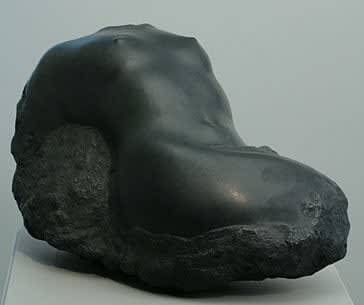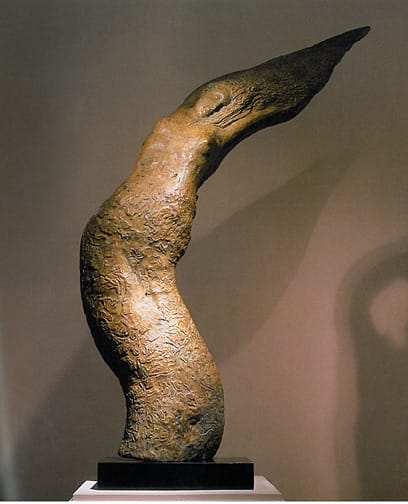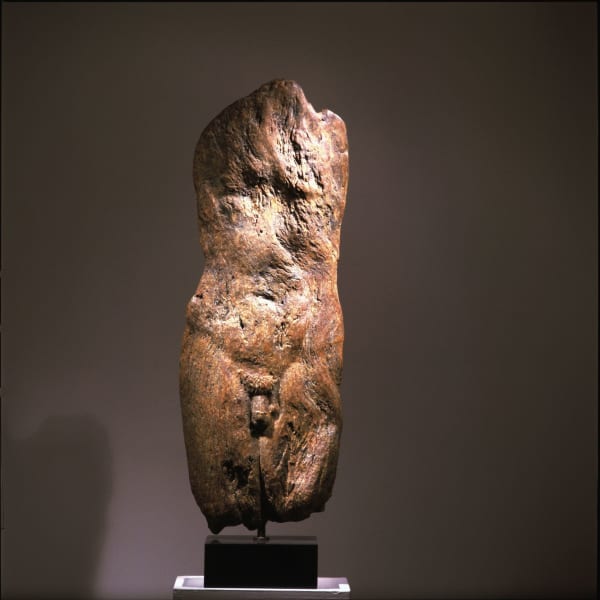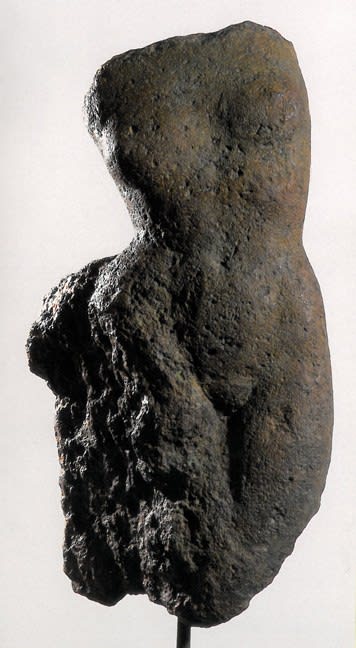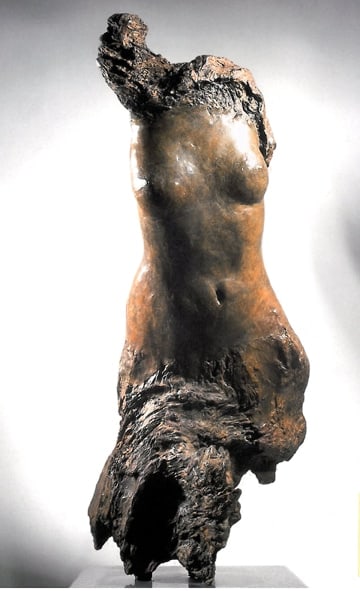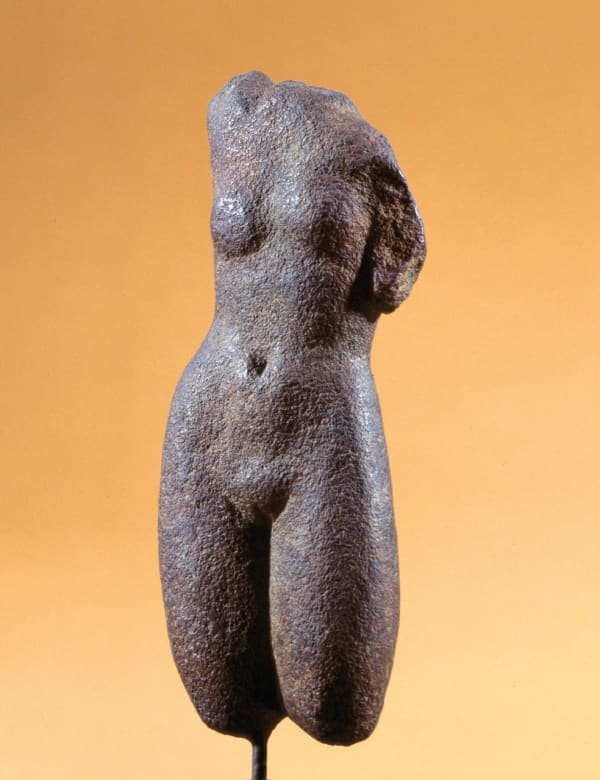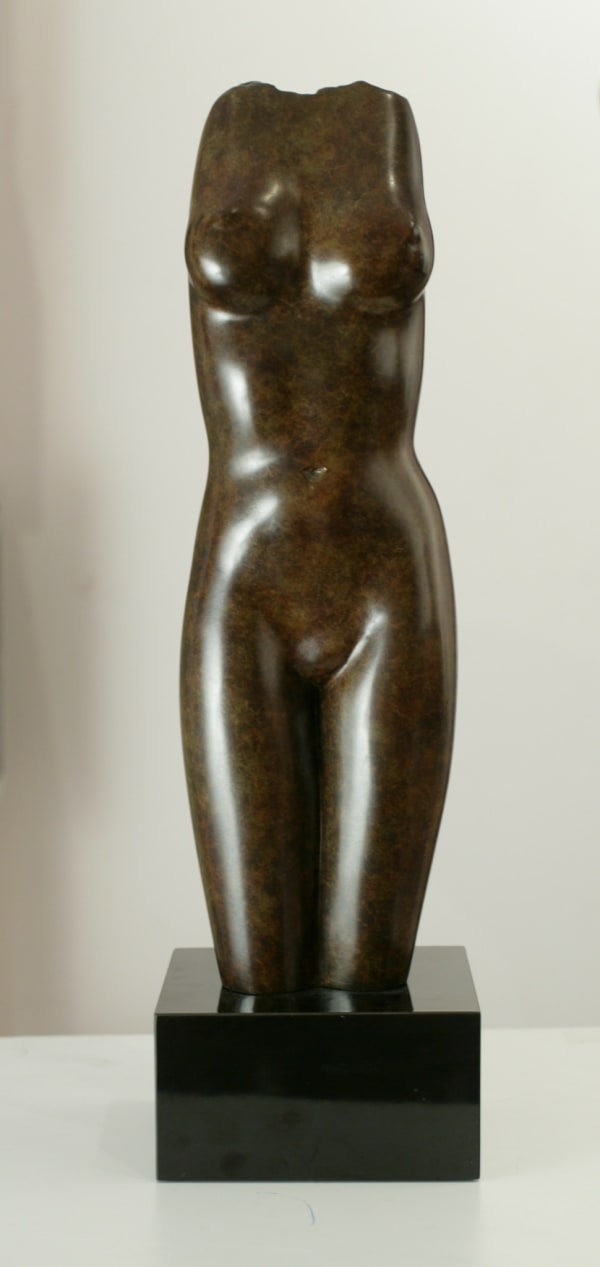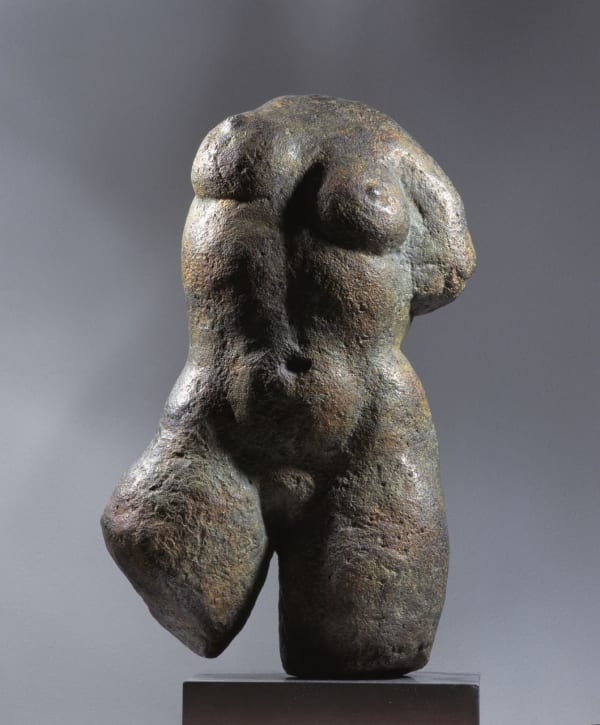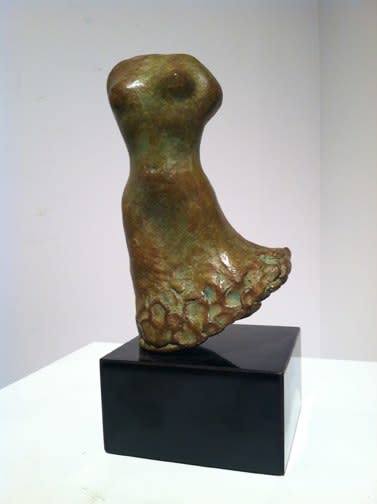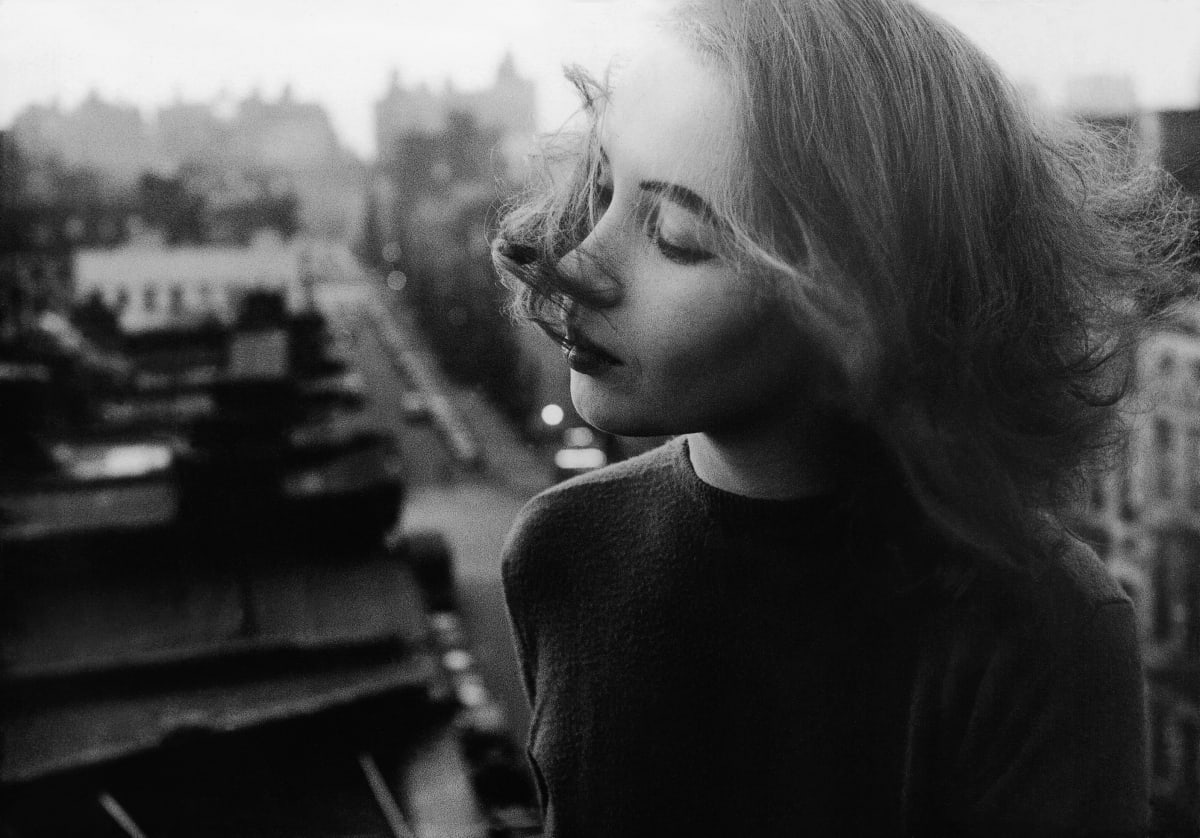Anita Huffington
(1934-2025) The female body: the way it moves, the substance of its forms, its cultural history, its mythology, its strength. These are the forces informing the sculpture of Anita Huffington.
At first glance, the figures, particularly her series of female torsos, are strikingly reminiscent of Classical Greek statuary. Huffington strengthens this identification with the ancients through the titles she gives her figures: Persephone, Kore, Gaea. But taking a longer look at the work we see past this primary source of influence to Huffington’s larger theme of the female in relation to the world, nature, emotion and time.
The influences on Huffington’s work evolved through the experiences of her creative life. Born in Baltimore, she attended the University of North Carolina, where she majored in dance, drama and art. These studies proved crucial to her passion for movement and its impact on the later development of her art. Her interest in dance led her to New York where she studied with Martha Graham and Merce Cunningham in the late 1950s. Under the tutelage of these twentieth century masters, Huffington deepened her awareness of the body, its dynamism and its substance. During this period, Huffington was also part of the avant garde cultural scene which was the driving energy of American modern art. Her friendships with New York School painters Willem de Kooning, Franz Kline and Philip Guston clarified her thinking and she realized that though she loved dance, it was art, especially sculpture, which would best express her feelings for movement and her relation to life.
After further studies at Bennington College and the University of South Florida, Huffington returned to New York and earned her Bachelor and Master of Fine Arts degrees from City College. By 1964, Huffington and her husband felt the need to exchange the exciting rhythms of the city for the contemplative rhythms of nature. They found an old log cabin in the Ozark Mountains of Arkansas, spent a year making it fit for habitation, including a studio for Huffington, and moved in.
The Ozarks have had an effect on Huffington’s work. The textures of the primeval woods around her home, the dominating presence of nature’s elements, have become additions to her sculptural vocabulary. Working in bronze, stone and wood, Huffington’s figures, whose Classical basis is itself an inheritor of an even more archaic past, now often take on the characteristics of the trees, wind, water, rocks and soil.
Huffington’s work continues to receive critical acclaim. She has exhibited continually since the 1970s in group and solo shows throughout the United States. She has been the recipient of prestigious awards and fellowships, and her work is represented in important and institutional and corporate collections, including The Metropolitan Museum of Art, Crystal Bridges Museum of American Art, the Morris Museum of Art, Northwest National Bank, the Washington office of Senator Blanche Lincoln, among others.
